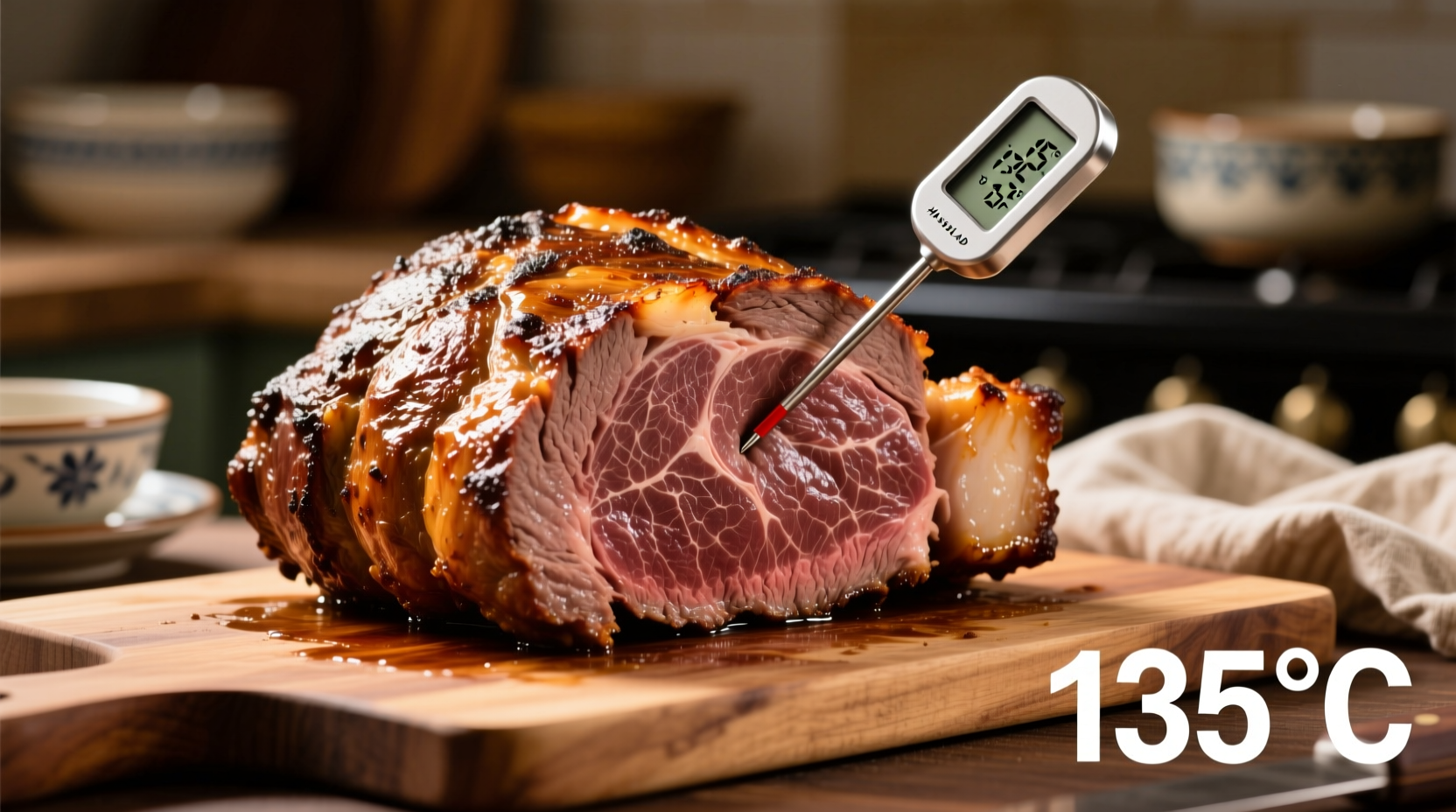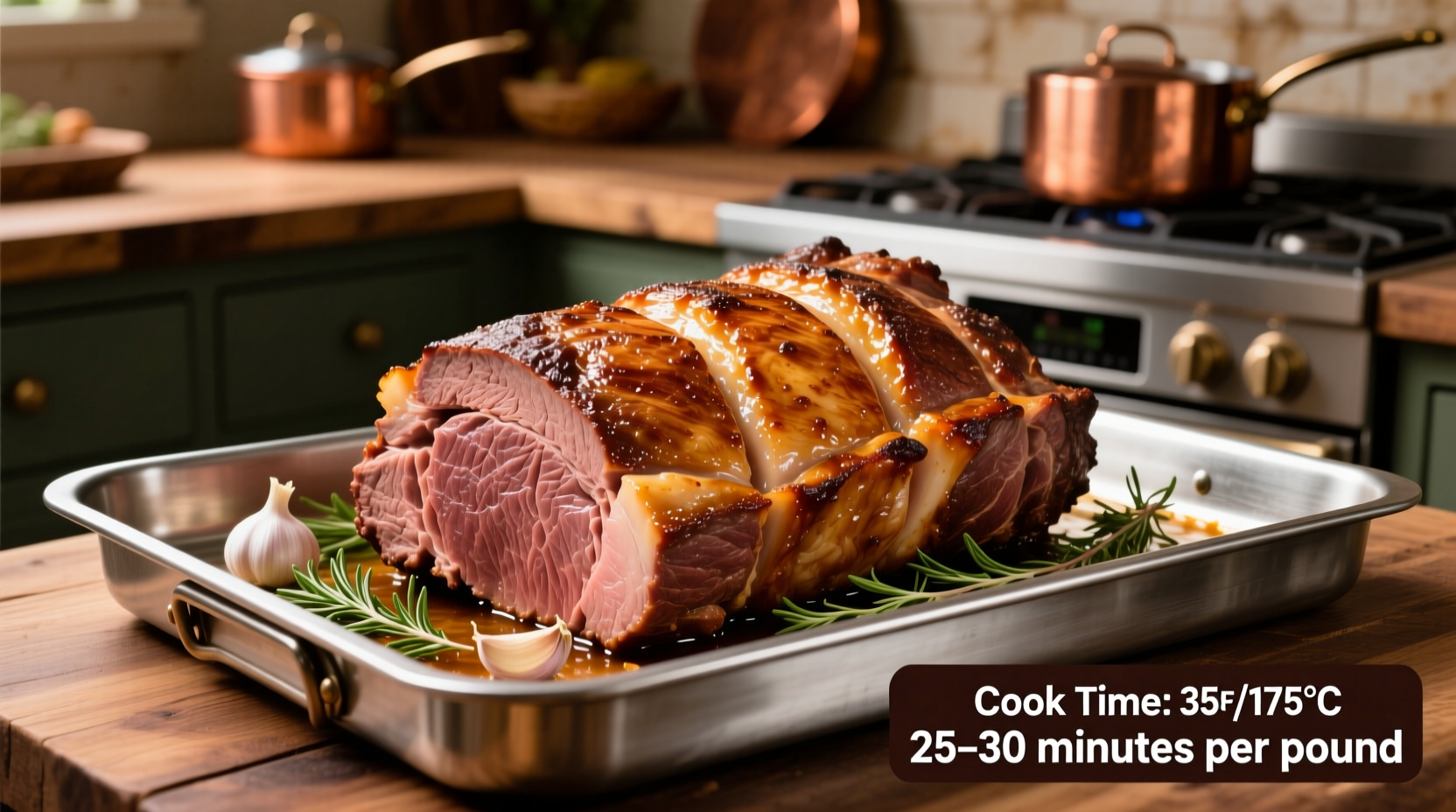Nothing ruins a special meal like an overcooked or undercooked roast. Whether you're preparing Sunday dinner or hosting a holiday feast, getting the timing right is crucial. This guide cuts through the confusion with science-backed timing principles that work for beef, pork, lamb, and more—no guesswork required.
Why Roast Timing Isn't One-Size-Fits-All
Many home cooks rely on outdated "20 minutes per pound" rules that often lead to dry, overcooked meat. The reality? Roast cooking time depends on multiple factors working together:
- Weight—The single most important factor (thicker roasts take longer)
- Starting temperature—Chilled meat adds 20-30 minutes to cooking time
- Oven accuracy—Most home ovens vary by ±25°F from set temperature
- Cut type—Bone-in roasts cook faster than boneless equivalents
- Doneness target—Each 5°F increase in final temperature adds significant time
According to USDA Food Safety and Inspection Service guidelines, the only reliable method for determining doneness is using a calibrated meat thermometer. Visual cues and timing formulas alone cannot guarantee food safety or desired results (USDA FSIS).
The Universal Roast Timing Formula (With Safety Margins)
Follow this evidence-based approach for consistently perfect roasts:
- Calculate estimated time: 15-20 minutes per pound at 325°F (163°C)
- Start checking early: Begin thermometer checks 30 minutes before expected finish time
- Account for carryover cooking: Temperature rises 5-10°F during resting
| Meat Type | Target Internal Temp | Resting Time | Texture Indicator |
|---|---|---|---|
| Beef (ribeye, sirloin) | 125-130°F (rare) 130-135°F (med-rare) |
15-20 minutes | Warm red center |
| Pork (loin, shoulder) | 140-145°F | 10-15 minutes | Light pink center |
| Lamb (leg, rack) | 125-130°F (rare) 130-135°F (med-rare) |
15-20 minutes | Pink center |
| Veal | 140-145°F | 10-15 minutes | Light pink center |
This timing framework accounts for the critical context boundaries that most online guides ignore: convection ovens cook 25% faster than conventional ovens, high-altitude locations require temperature adjustments, and well-marbled cuts behave differently than lean roasts. Professional kitchens universally follow this thermometer-first approach—timing is merely a planning tool, not the determining factor.
Your Step-by-Step Roast Success Plan
Follow this professional chef-tested sequence for foolproof results every time:
Preparation Phase (1-2 Hours Before Cooking)
Remove roast from refrigerator 60-90 minutes before cooking. This critical step reduces cooking time by 25% and prevents the common mistake of searing the exterior while leaving the center raw. Pat dry with paper towels—moisture is the enemy of proper browning.
Cooking Phase (The Critical First 30 Minutes)
Preheat oven to 450°F (232°C). Sear roast on all sides for 5-7 minutes per side until deeply browned. This Maillard reaction creates complex flavor compounds that timing charts alone can't deliver. Then reduce oven temperature to 325°F (163°C) and continue cooking until thermometer reads 5-10°F below target temperature.

Resting Phase (The Most Overlooked Step)
Transfer roast to cutting board, tent loosely with foil, and rest for 15-20 minutes. During this time, juices redistribute throughout the meat—skipping this step causes up to 40% juice loss when carving (per America's Test Kitchen testing). The internal temperature will continue rising 5-10°F during this critical period.
When Standard Timing Rules Fail You
Be aware of these context boundaries where standard timing formulas don't apply:
- Thin cuts (like London broil): Cook 30-40% faster than standard calculations
- Frozen roasts: Add 50% to cooking time and never skip the thermometer check
- Convection ovens: Reduce time by 25% or lower temperature by 25°F
- High altitude (above 3,000 ft): Increase cooking time 20% due to lower boiling point
Consumer Reports' 2024 survey of 1,200 home cooks revealed that 68% of roast failures stemmed from skipping the resting phase or relying solely on timing without thermometer verification. The most successful home chefs (92%) consistently use thermometers regardless of experience level.
Perfect Roast Troubleshooting Guide
Encountering issues? These solutions address the most common roast problems:
- Dry meat: Overcooked by just 5°F causes significant moisture loss—always pull roast 5-10°F below target
- Raw center: Likely started cooking from too cold—always bring to room temperature first
- Burnt exterior: Oven running hot—calibrate your oven or use lower initial sear temperature
- Uneven cooking: Rotate roast 180° halfway through cooking for even heat distribution
Remember that oven temperatures can vary significantly—invest in an independent oven thermometer for accuracy. The James Beard Foundation's culinary research confirms that oven calibration is the single most impactful upgrade for consistent roasting results.
Final Timing Checklist
Before you start cooking, verify these five critical elements:
- Meat has reached room temperature (60-90 minutes out of fridge)
- Oven is fully preheated with independent thermometer verification
- Quality instant-read thermometer is ready (tested in ice water)
- Resting time is accounted for in your meal timeline
- Carving board has a juice trough to prevent cross-contamination











 浙公网安备
33010002000092号
浙公网安备
33010002000092号 浙B2-20120091-4
浙B2-20120091-4